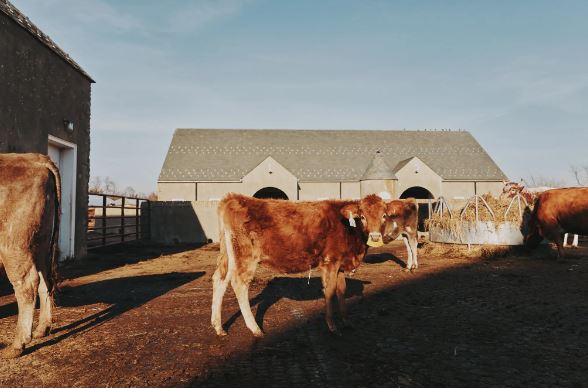At least one individual in Texas has been diagnosed with bird flu after coming into contact with presumed-infected dairy cows, state authorities disclosed on Monday.
The revelation introduces a concerning aspect to an outbreak that has impacted millions of birds and sea mammals globally and, more recently, cows in the United States.
As of now, federal officials have stated that there are no indications that the virus has undergone mutations facilitating easier transmission among humans.
The primary symptom exhibited by the patient was conjunctivitis, and they are currently undergoing treatment with antiviral medication and are in recovery, as per the Centers for Disease Control and Prevention (CDC).
Last week, the Department of Agriculture reported the initial cases of bird flu in dairy herds in Texas and Kansas, followed by an additional herd in Michigan. Preliminary testing has suggested potential infections in cows in New Mexico and Idaho as well.
The virus detected has been identified as the same strain of H5N1, a subtype of influenza, circulating among North American birds.
This marks only the second case of H5N1 bird flu in the United States, with the first reported in 2022. The overall risk to the public remains low, according to experts, although ongoing testing and analysis are being conducted, leaving numerous questions unanswered.
Bird flu, or avian influenza, comprises a group of flu viruses primarily adapted to birds. The particular strain in these recent cases, H5N1, was initially identified in geese in China in 1996 and in humans in Hong Kong in 1997.
In 2020, a highly pathogenic form of H5N1 emerged in Europe and quickly spread globally, affecting over 82 million farmed birds in the United States, marking the worst bird flu outbreak in the nation’s history.
While sporadic cases of H5N1 infections in humans have been reported in other countries since its identification, the vast majority have resulted from prolonged direct contact with birds.
Currently, there is no evidence suggesting that H5N1 has developed the ability to spread efficiently among humans.
However, this year witnessed reports of sick cows in Texas and New Mexico, a surprising development considering cows were not previously considered high-risk. The virus may have entered cattle through various avenues, such as contaminated food or water sources by infected wild birds or other susceptible animals.
Although the virus has caused relatively mild illness in cows, affecting primarily older animals, it has led to a significant drop in milk production and changes in milk quality. Thus far, there are no plans to depopulate affected herds, which is standard protocol for infected poultry flocks.
The possibility of cow-to-cow transmission remains uncertain, with some experts expressing surprise at the rapid spread of the virus. Genetic sequencing of the virus from different hosts can provide insights into its ability to adapt and spread.
While commercially processed milk remains safe to drink due to pasteurization’s effectiveness in eliminating pathogens, concerns linger regarding the potential presence of the virus in raw dairy products.
Federal officials urge continued monitoring and caution, emphasizing the need for ongoing research to better understand and mitigate the risks associated with avian influenza.

